 |
 |
 |
| |
Mapping of Vicriviroc Resistance Mutations in HIV-1 gp120 Generated by in vitro Selection of a Primary HIV-1 Isolate in PM-1 Cells
|
| |
| |
Reported by Jules Levin
16th Intl HIV Drug Resistance Workshop, June 12-16, 2007, Barbadoc
R.A. Ogert, C. Buontempo, L. Wojcik, L. Ba, P. Buontempo, R. Ralston, J. Strizki, and J.A. Howe
Schering-Plough Research Institute, Kenilworth, NJ USA
BACKGROUND
Vicriviroc (VCV) is one of a new class of CCR5 receptor antagonists in development for HIV-1 therapy. Currently, only limited data is available on the
development of viral resistance to this class of drugs. In this study, we evaluated viruses containing chimeric gp120 envelopes from resistant and susceptible
isolates to better define the phenotypic and genotypic correlates of resistance to CCR5 antagonists.
Methods
A VCV resistant virus was generated by serial passaging of a clade B isolate (QZ4589) in the presence of increasing concentrations of VCV in PM-1 cell for >6
months. HIV gp120 sequences from resistant cultures were amplified by DNA-PCR and amino acid changes in resistant envelopes were identified by comparison to the parental passage control virus. Homologous recombination of gp120 fragments into a QZ4589 gp160 or ADA gp160 expression vector was performed in BJ5183 E. coli, or by fragment swap into a replication competent NL43-AD8 molecular clone. Susceptibility studies were performed with a single-cycle and multicycle infection assays. Site-directed mutagenesis was performed to assess the contribution of individual and combined gp120 mutations on CCR5 antagonist susceptibility.
Results
We identified 10 dominant amino acid changes within gp120 associated with HIV-1 resistance to vicriviroc. HIV-1 QZ4589 envelopes pseudotyped poorly;
therefore, we recombined the C2-V5 gp120 domain from a resistant env clone into ADA gp160; resulting in significantly enhanced luciferase signals. The ADA
recombinant containing the QZ4589 VCV resistant C2-V5 gp120 domain was resistant to VCV as evidenced by a decrease in the percent maximal suppression in a single-cycle pseudovirus assay. ADA chimeric envelopes containing only the V3-loop from the QZ4589 resistant virus were completely susceptible to VCV. Site-directed mutagenesis of individual amino acids revealed that a single V3 amino acid change (R305K) in the stem region of the V3 loop had the most significant impact on VCV resistance. The R305K substitution increased the percent maximal suppression by vicriviroc in a single-cycle pseudovirus assay to 90%; predictive of a loss in affinity of the envelope for inhibitor-bound CCR5. The additional amino acid substitutions P363S (C3), A373T (C3), N413T (V4) and T467I (V5) restored partial susceptibility to VCV, whereas the Q315R (V3) and S437P (C4) substitutions retained resistance. The V3 substitution to the crown region of the V3 loop (T319K) resulted in a complete loss of infectivity in a single-cycle assay.
AUTHOR CONCLUSIONS
HIV-1 resistance to VCV in the QZ4589 isolates maps to multiple amino acid
changes in the C2-V5 region.
Single mutations within the V3, C3, and V5 regions restored partial, but not complete susceptibility to vicriviroc.
Introduction of the QZ4589 V3-loop region into a heterologous background did not confer resistance to the chimeric envelope.
This finding demonstrates that changes in the V3-loop are context dependent and alone are insufficient to cause VCV resistance.


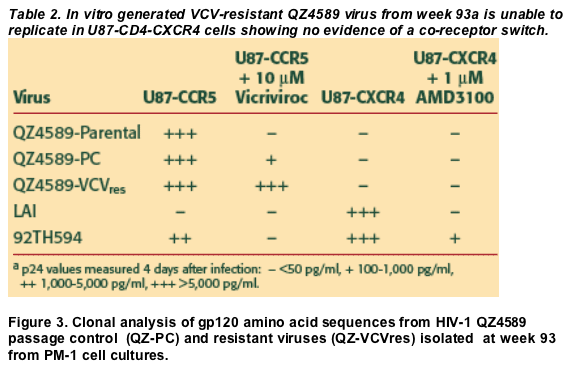
QZ4589 HIV-1 passaged in the presence of vicriviroc (QZ4589- VCV) is resistant to vicriviroc as evidenced by the lack of a doseresponse. The QZ4589 passage control virus is susceptible to vicriviroc with an IC50/IC90 at 1.0 nM/50.0 nM. QZ-4589 virus became resistant to vicriviroc at week 45, however replication in the presence of 10 mM vicriviroc remained suppressed compared to the QZ-PC culture until week 59.
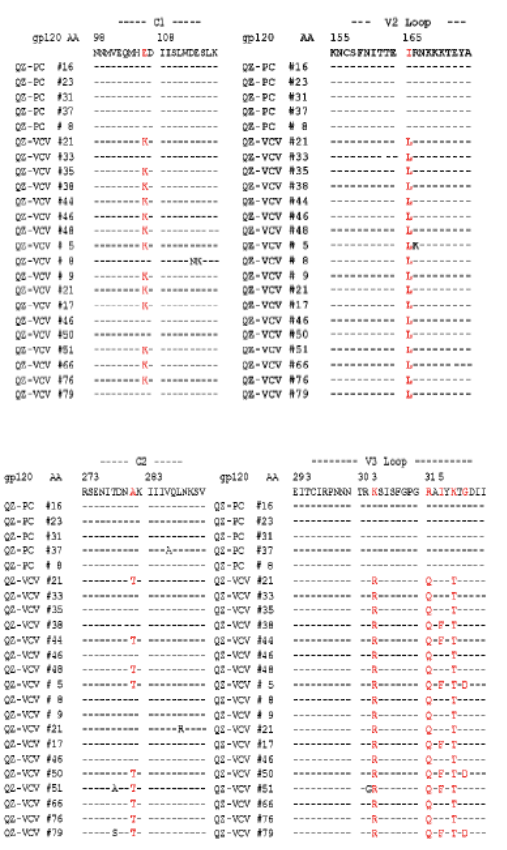
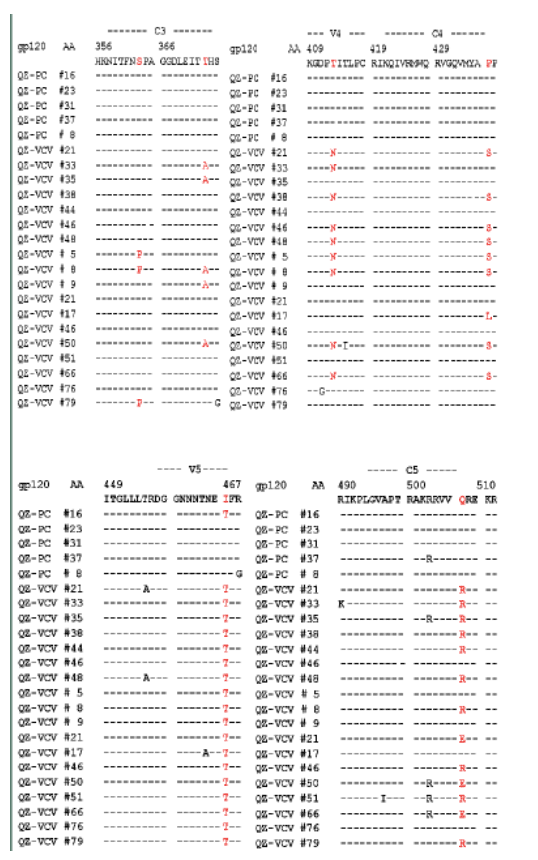
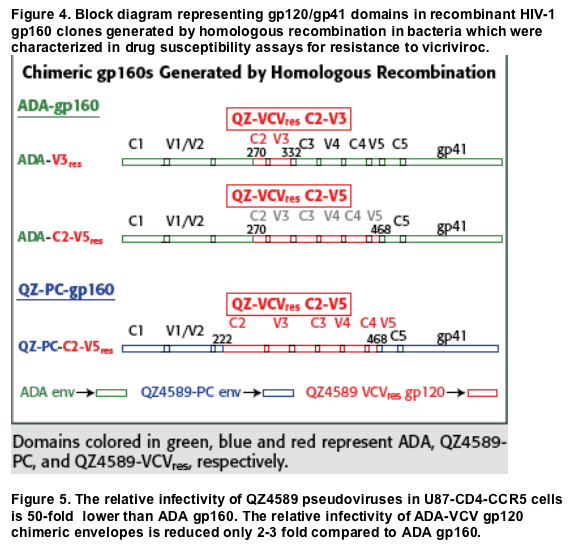

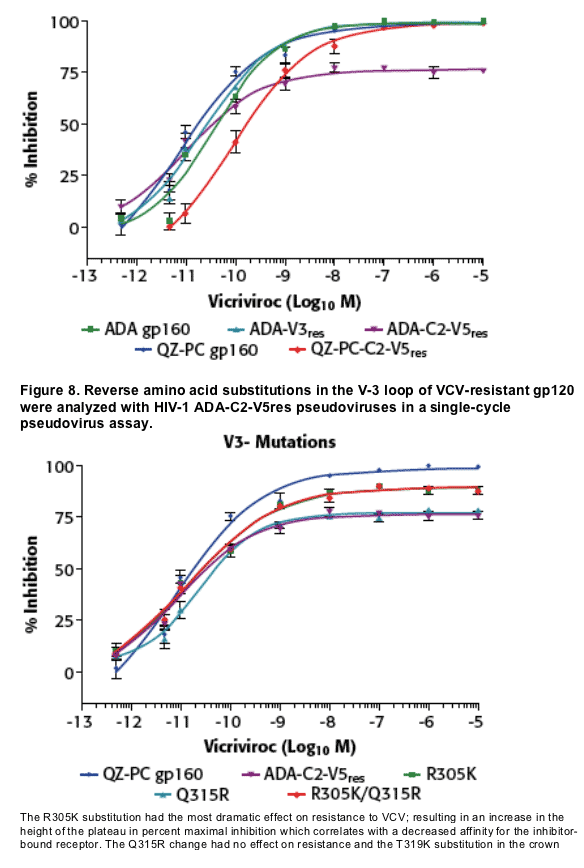
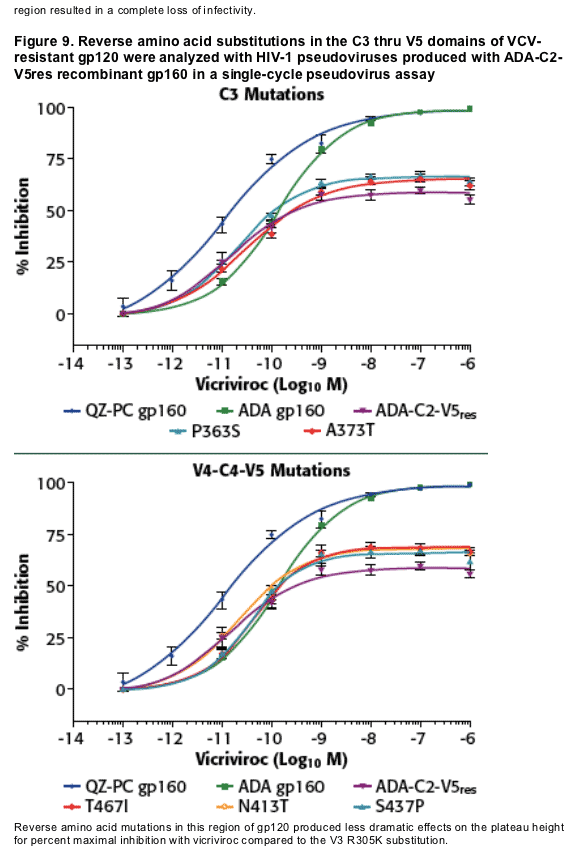
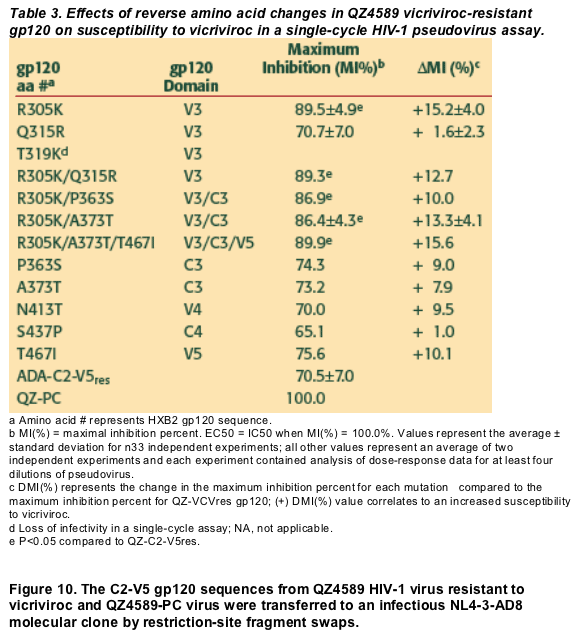
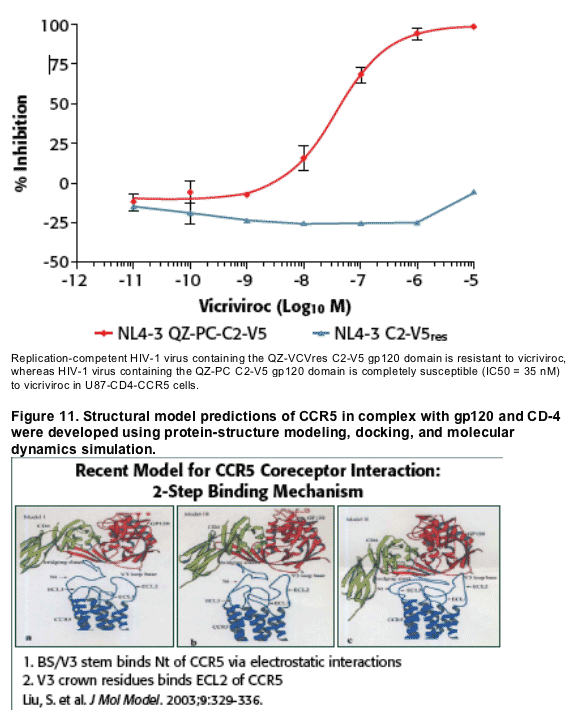
REFERENCES
1. Liu, S., S. Fan, and Z. Sun. Structural and functional characterization of the human CCR5 receptor in complex with HIV gp120 envelope glycoprotein and CD4 receptor by molecular modeling studies. J Mol Model. 2003;9:329-36.
2. Pugach, P., A.J. Marozsan, T.J. Ketas, E.L. Landes, J.P. Moore, and S.E. Kuhmann. HIV-1 clones resistant to a small molecule CCR5 inhibitor use the inhibitor-bound form of CCR5 for entry. Virology. 2007;361:212-28.
3. Strizki, J.M., C. Tremblay, S. Xu, L. Wojcik, N. Wagner, W. Gonsiorek, R.W. Hipkin, C.C. Chou, C. Pugliese-Sivo, Y. Xiao, J.R. Tagat, K. Cox, T. Priestley, S. Sorota, W. Huang, M. Hirsch, G.R. Reyes, and B.M. Baroudy. Discovery and
characterization of vicriviroc (SCH 417690), a CCR5 antagonist with potent activity against human immunodeficiency virus type 1. Antimicrob Agents
Chemother. 2005;49:4911-9.
4. Westby, M., C. Smith-Burchnell, J. Mori, M. Lewis, M. Mosley, M. Stockdale, P. Dorr, G. Ciaramella, and M. Perros. Reduced maximal inhibition in phenotypic
susceptibility assays indicates that viral strains resistant to the CCR5 antagonist maraviroc utilize inhibitor-bound receptor for entry. J Virol. 2007;81:2359-71.
|
| |
|
 |
 |
|
|